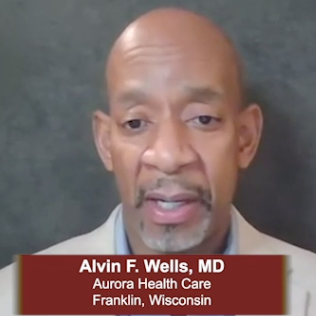Expert Perspectives: Treatment Options for Behcet’s Disease
The difficult-to-treat disease has a multitude of symptoms to address with a wide spectrum of agents.
Alvin F. Wells, MD

Behcet’s disease can be very difficult to treat and cause devastating effects. But emerging treatments options could offer new hope.
Alvin F. Wells, MD, a rheumatologist with Aurora Health Care in Franklin, WI, shared his perspectives on recent studies of treatments for Behcet’s disease during a webinar hosted by Christopher Parker, DO, a rheumatologist with The Austin Diagnostic Clinic in Texas.
The webinar, titled “Expert Perspectives on Management of Rheumatic Diseases: Post ACR Convergence 2020,” covered highlights from the American College of Rheumatology’s virtual meeting, ACR Convergence 2020, which was held in November.
Several studies looked at apremilast for treating Behcet’s disease, showing pain improvement and healing, particularly of oral ulcers.
One abstract presented at the event looked at systemic treatment of Behcet’s disease according to clinical phenotypes.
“It can be a very, very difficult disease to treat,” Wells said. “So, before we had drugs like apremilast, we were throwing everything we could at those patients to get them under control. One little caveat to remember is apremilast is used mainly for the oral ulcers and for the pain.”
The study included 111 patients in Northern Spain between 1980 and 2019 diagnosed with definitive or possible Behcet’s disease. All patients required systemic treatment.
“I have residents and fellows who rotate through the clinic and I say, you still need to be familiar with some of these older drugs, because indeed not everybody’s going to respond to these amazing biologic drugs we have. Not everybody’s going to respond to JAK inhibitors,” Wells said.
The study concluded that most patients required oral corticosteroids and colchincine, almost half required conventional immunosuppressants and up to a third required biologic therapy. Twenty-eight patients required biological therapy, indicated most frequently by ocular manifestations and oral ulcers, with adalimumab and infliximab being the most frequently used.
“This is not your skin, this is not your joint, we’re talking about your vision,” Wells said. “We’re going to throw the kitchen sink at it to get this under control, side effects be damned.”
Another abstract looked at autologous stem cell transplant for Behcet’s disease.
Such treatment may be considered for very severe cases. The study found that autologous hematopoietic stem cell transplantation is safe and feasible for multi-refractory patients and might stabilize patients with life-threatening disease.
“You’ve got to worry about CMV infection,” Wells said. “You’ve got to worry about other types of infections. You’ve got to worry about other malignancies. So, at the end of the day, if you pull the switch on that, I mean these are sick patients who almost have no option."
"Cyclophosphamide failed on some of these patients. High dose steroids. TNF drugs have failed," he said. "These are patients who they needed to do something. So, it is an option, but it’s almost like a last-ditch effort to get them under control.”